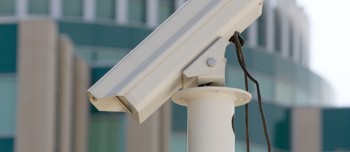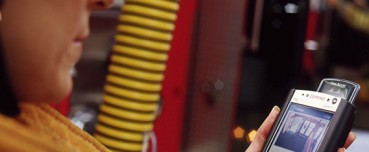.jpg)
By Steve Collen
IP DEVICES REPLACE ANALOG AT AN ACCELERATING PACE
Organizations will continue implementing more IP-based video surveillance cameras, building access controls, and sensors over analog devices. The main reason is that IP networks provide capabilities not available on proprietary networks, such as:
Quality of Service (QoS)
You can assign priority to data based on the application type, sender, or recipient. Surveillance video, for example, needs priority over other types of application traffic sharing the same network. Furthermore, during disaster response, you can assign priority to all critical information to and from commanders and executives, making sure that these messages don¡¯t have to compete with less urgent communications.
Discovery protocols
The network automatically discovers new nodes, such as sensors, cameras, or wireless access points, eliminating the time and effort of manual provisioning. IP-based discovery protocols are especially valuable today, when IT departments are stretched thin.
Authentication and authorization
An especially popular technology is Network Admission Control (NAC), which authenticates both the user and the device before granting network access. If the device doesn¡¯t comply with the organization¡¯s security policy, NAC can remediate the device automatically, with no involvement by the IT organization.
To be sure, analog security devices won¡¯t disappear anytime soon--especially given today¡¯s limited budgets for new purchases and the time required for re-training. However, organizations are discovering that they can increase the value of their existing analog cameras and sensors simply by connecting them to the IP network.

IP Cameras (Photo by Cisco)
SURVEILLANCE VIDEO BECOMES LIFE-LIKE
|
.jpg)
|
|
Video Surveillance (Photo by Cisco)
|
New high-definition (HD) video surveillance cameras provide resolution of up to 1080p and 30 frames per second, vastly increasing the value of video surveillance. With HD video, organizations can:
• Identify people with confidence. A clear video clip creates powerful evidence for prosecution or exoneration.
• Read license plates at distance.
• Use video analytics software (see next section).
• And generally do a better job of identification and assessment.
However, more pixels take up more bandwidth. So unless HD video surveillance cameras are paired with effective compression algorithms like H.264, some organizations may require additional bandwidth. We expect to see the gap narrow through 2009.
VIDEO ANALYTICS SOFTWARE CONTINUES TO MATURE
Video analytics software can be hosted centrally on dedicated servers or in individual cameras. It offloads human operators by tirelessly counting people, identifying unattended packages, recognizing license plates, detecting motion, and more. After identifying an event of interest, the software can automatically alert a human operator, and perhaps send the video clip along with the alert.
Trends in video analytics include:
• Greater reliability and stability, resulting in more actionable information.
• Decreasing prices, making it practical for new types of applications, such as loss prevention in retail environments.
• Processing in the video surveillance camera itself rather than on centralized servers. Cisco IP Video Surveillance Cameras, for example, have the onboard intelligence to identify events of interest, eliminating the need for more bandwidth to accommodate high-definition video sent constantly from multiple cameras.
• Applications in addition to physical security. Retailers, for example, have begun using video analytics to recognize when lines get too long. An alert is sent to the manager, who can adjust staffing.
BUILDING CONTROLS GO IP
|

|
|
Access control (Photo by Cisco)
|
Organizations are beginning to shift their building access controls from isolated networks to the same IP network they already use for voice, surveillance video, and data. Harrisonville Schools in Missouri uses an IP-based building control system to automatically enforce policies stating when doors should be locked or unlocked. Administrators no longer worry or have to go around and check individual doors, and they like knowing that they can quickly lock down the entire building with a single click.
We¡¯ll continue to see more organizations integrate their IP-based video surveillance and building control systems, to improve incident detection and assessment. An attempt to use an access card, for example, can trigger the video surveillance camera to capture the event, and either send an alarm or archive the video for forensics purposes. We are also seeing organizations integrate the network-enabled building systems and device power management--for example, to turn employees¡¯ IP phones on or off when they swipe an access badge.

Incident response (Photo by Cisco)
OPEN STANDARDS COME OF AGE
In today¡¯s economic climate, organizations are keenly aware that their investments will likely have to last a long time. Solutions built with open standards are easier to expand, customize, and integrate with other solutions.
Organizations like Open Network Video Interface Forum (ONVIF), Physical Security Industry Association (PSIA) and the Security Industry Association (SIA) are leading the adoption of open standards. Examples include H.264 for video compression and Common Alerting Protocols (CAP) for broadcasting alerts to up to tens of thousands people at the same time, whether they are using a mobile phone, smartphone, telephone, IP phone, or laptop. Not surprisingly, security system resellers and integrators are flocking to sign up training to learn or refresh their IP skills. Many consider fluency with IP a requirement for business survival.
RADIO INTEROPERABILITY GROWS INTO COMMUNICATIONS INTEROPERABILITY
Project 25 (P25) is not the final answer to radio interoperability because it will take years, if not a decade or more, before every public- and private-sector organization can find the budget to replace its radios. What¡¯s more, it¡¯s become clear that collaboration within and between organizations requires more than radio interoperability. People who are out of radio range need to be able to join talk groups with traditional phones, IP phones, mobile phones, or laptops. And they also want to share video, floor plans, database access, and each other¡¯s desktops. The trend is towards comprehensive communications interoperability, and it has taken hold in public and private sectors:
• The City of Danville, Virginia, uses the Cisco IP Interoperability and Collaboration System (IPICS) to enable communications interoperability among multiple agencies along the Virginia and North Carolina border.
• Auckland International Airport in New Zealand uses the same solution to enable operations center personnel to monitor any radio channel from a PC any desk instead of finding a desk that has the appropriate physical radio.
• Bryant University, of Rhode Island, hosts an IP-based interoperability and collaboration that it shares with multiple local and state agencies, helping to create a safer environment not only on campus, but in the larger community.
THE DEMISE OF STANDALONE SYSTEMS
Cisco has noticed that customers today are far more likely to ask for complete solutions. Lean IT departments are growing leaner, and IT personnel simply don¡¯t have the time or budget to integrate proprietary point products. Nor do security personnel have the staff to use separate management interfaces.
Out-of-the-box integration based on common open standards is the key. Recognizing this, vendors are establishing partnerships to ensure that their solutions interoperate. As an example, the Cisco Open Platform for Safety and Security provides a framework for systems integrators to use commercial, off-the-shelf (COTS) products. Use of COTS products reduces costs and enables organizations to integrate more capabilities from different vendors as their needs change.
CONCLUSION: A SIMPLE PLAN TO HARNESS THE ADVANCES
Collectively, these trends help organizations improve their ability to prepare for, prevent, detect, assess, and respond to threats. Organizations can take advantage of the advances in the following phases, as budget permits:
• Connect existing video surveillance cameras and sensors to the IP network so that you can securely monitor them from any location, using a Web browser.
• Add IP-based building access controls and communications systems.
• Implement policy-based response to detected events--for example, notifying a security guard on a smartphone if a door is opened after hours or a sensor reading is out of normal range.
Steve Collen is Director of Business Development for Cisco¡¯s Physical Security Business Unit (http://www.cisco.com/). With Cisco since 1995, Collen has worked in product management and marketing roles in the routing, network security, and most recently physical security technology areas. Prior to that, Collen worked for AT&T and British Telecom.
For more information, please send your e-mails to swm@infothe.com.
¨Ï2007 www.SecurityWorldMag.com. All rights reserved. |



